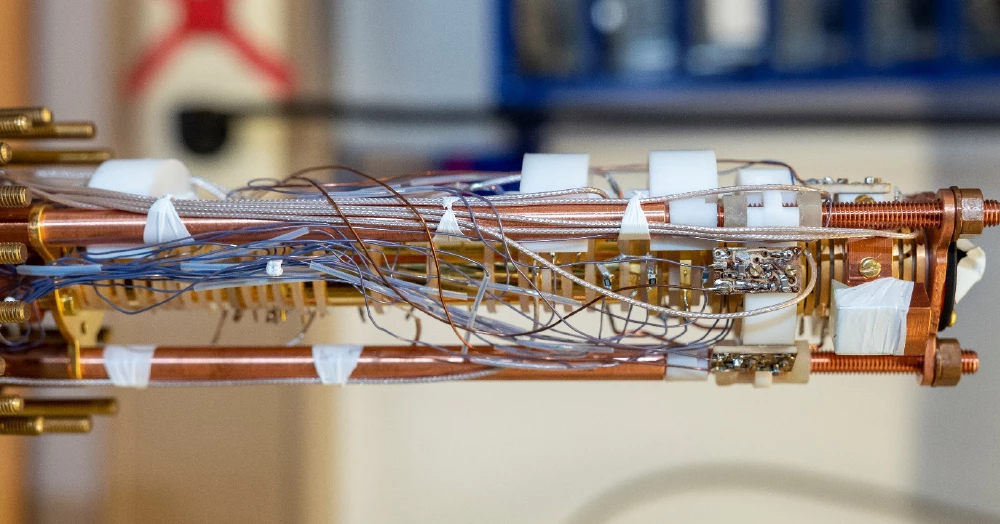Antimatter is a tricky substance to study, not least because it will annihilate any container you try to put it in. But now, physicists at CERN have developed a new antimatter trap that can cool down samples in seconds, rather than hours. This advance allows scientists to study larger samples for longer, which could help unlock some of the biggest mysteries of the universe.
Antimatter is kind of the “evil twin” of the regular matter that dominates the world around us. The main difference is that its particles have the opposite charge to their common counterparts, but that simple variation has a major implication – if matter and antimatter particles ever meet, they annihilate each other in a burst of energy.
Lucky for us, antimatter is extremely rare in the universe today, but scientists aren’t sure why that’s the case. According to the Standard Model, the Big Bang should have created equal amounts of matter and antimatter, which then should have collided and wiped out most of the contents of the universe before it really began. The fact that we’re here now to question it shows that that didn’t happen, but what skewed the scales towards matter remains one of the most perplexing mysteries of science.
Unfortunately antimatter’s rarity and volatility make it hard to investigate the problem. It can only be created in tiny amounts in facilities like the Large Hadron Collider, where particles are smashed together to produce pairs of matter and antimatter particles. And then it’s hard to store – obviously you can’t just stick antimatter in a jar, because it’ll pop out of existence as soon as it comes into contact with matter.
So scientists store antimatter in what are called Penning traps, which use electromagnetic fields to suspend particles and antiparticles in a vacuum. These samples are often cooled to extremely cold temperatures to reduce noise, but the techniques commonly used on matter are tricky to apply to antimatter. Now CERN researchers have developed a new version of these traps to cool antimatter, which increases the sample sizes of antimatter available for experiments and improve the precision of measurements.

Laser cooling is one of the leading techniques – essentially, when an atom is hit with a laser beam, it absorbs and then re-emits a photon, which changes its momentum. It's hard to get antimatter to respond directly to this method, although another CERN project recently made a breakthrough in that area. Instead, antimatter can be cooled indirectly by laser-cooling nearby ions, which then absorb the heat from the antimatter particles. The problem though comes back to placing matter and antimatter in the same trap.
So for the new version, scientists at CERN’s BASE collaboration connected two Penning traps with a 3.5-inch superconducting resonant electric circuit. One trap contains a cloud of beryllium ions, while the other hosts a single antiproton. When the beryllium is laser cooled, energy is transferred from the antiproton, through the circuit to the ions, thus cooling the antiproton.
The team says that this method can cool samples much more quickly than usual, and to colder temperatures.
“This is an important milestone in precision Penning trap spectroscopy,” says Christian Smorra, an author of the study. “With optimized procedures we should be able to reach particle temperatures of the order of 20 to 50 milliKelvin (mK), ideally in cooling times of the order of 10 seconds. Previous methods allowed us to reach 100 mK in 10 hours.”
This paves the way towards more precise measurements, which in turn could shed some light on why there’s so little antimatter in the universe. It’s believed that charge is the only real difference (along with slight variations in quantum numbers) between matter and antimatter, but it’s best not to rely on assumptions. Scientists are studying some of the fundamental properties of antimatter and comparing them to their matter counterparts – if anything else is different, it could be the key to unraveling the entire mystery.
“Our vision is to continually improve the precision of our matter–antimatter comparisons to develop a better understanding of the cosmological matter–antimatter asymmetry,” says Stefan Ulmer, an author of the study. “The newly developed technique will become a key method in these experiments, which aim to measure fundamental antimatter constants at the sub-parts-per-trillion level.”
The research was published in the journal Nature.
Sources: CERN, CERN Courier




